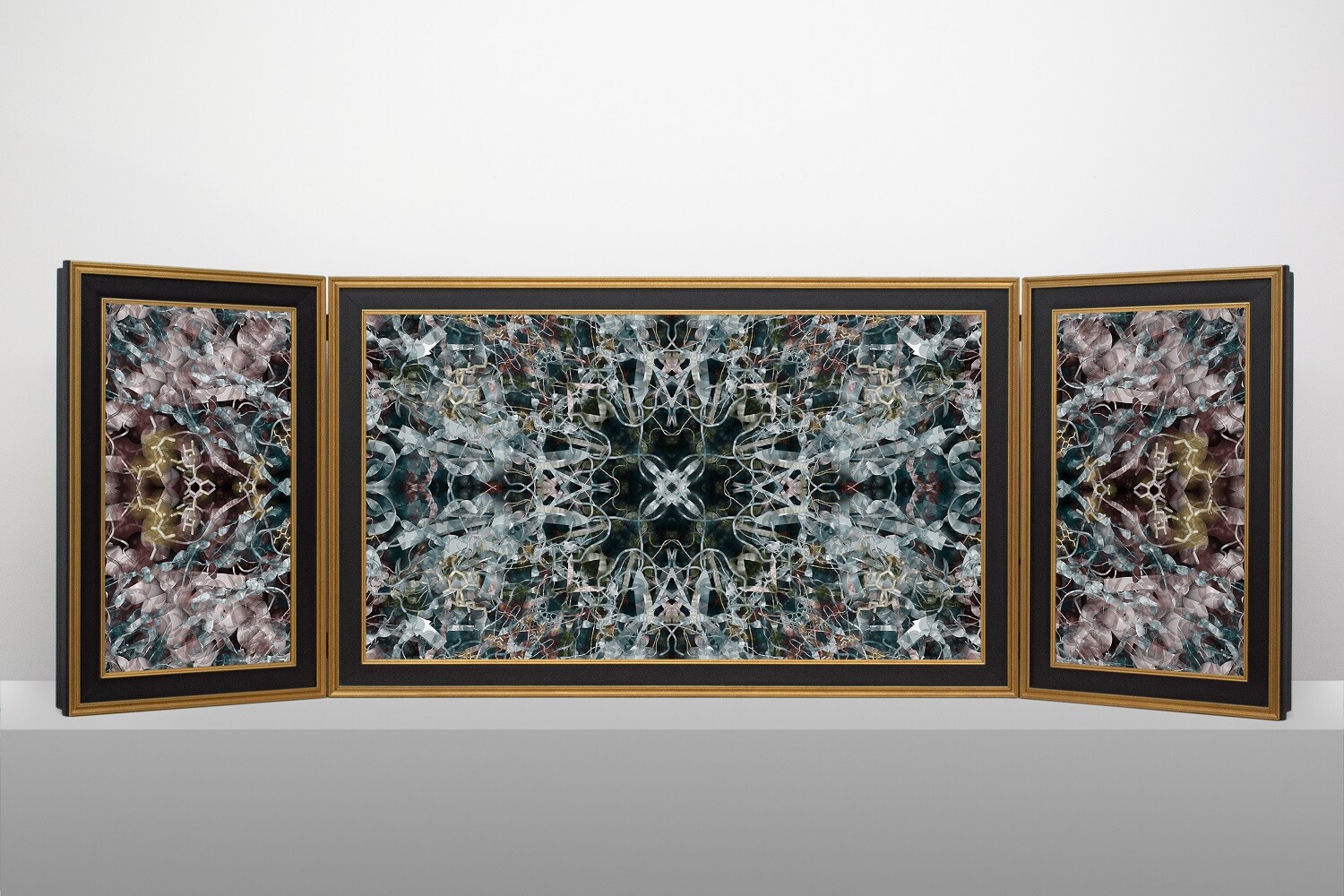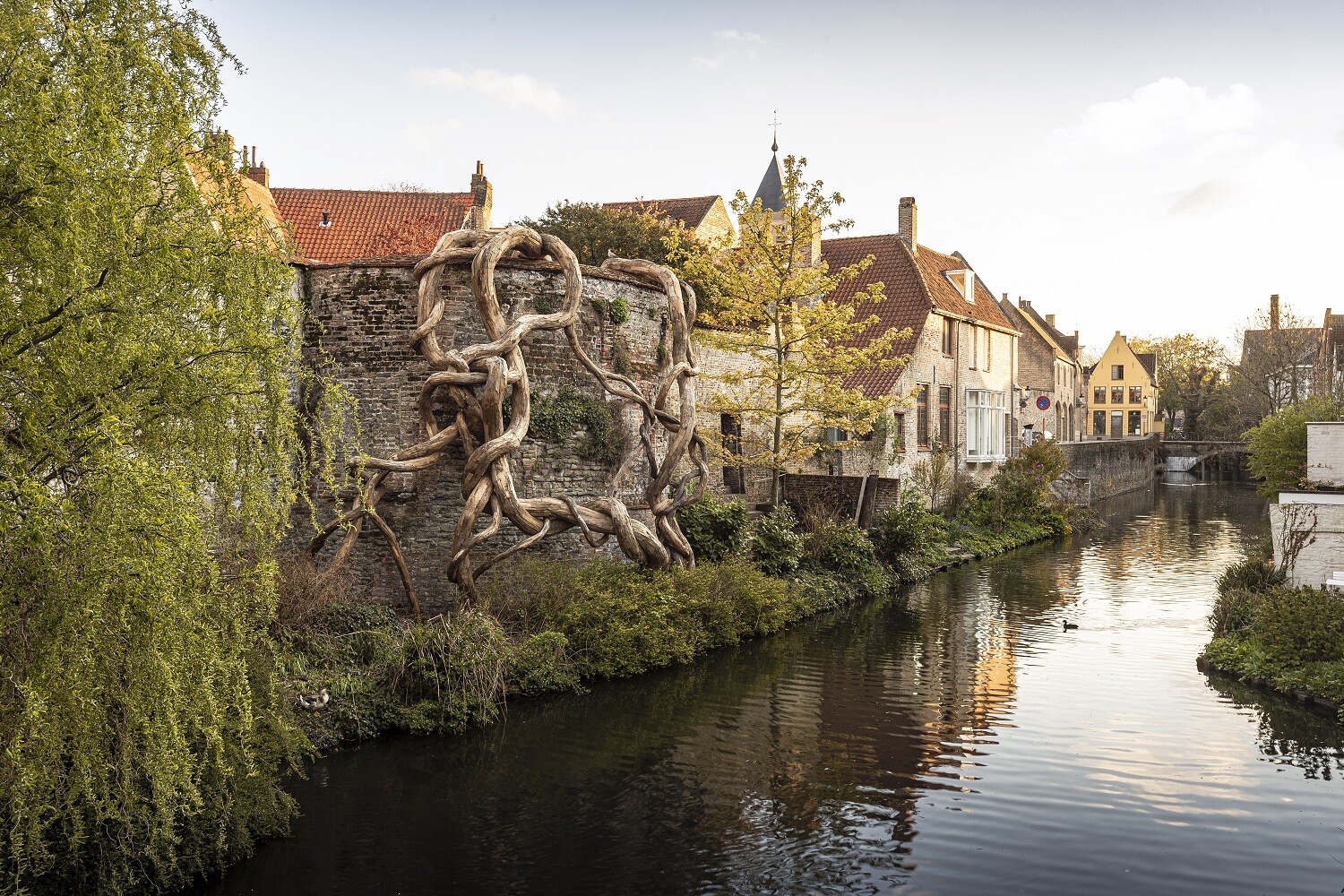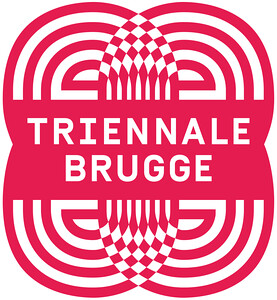TraumA
Contemporary art and architecture in the city centre of Bruges and Zeebruges.
May 8–October 24, 2021
Lange Vesting 112
8200 Bruges
Belgium
T +32 50 45 50 02
info@triennalebrugge.be
From May 8 to October 24, 2021, Bruges once again becomes the host city for an exploration of contemporary art and architecture. During the third edition of Bruges Triennial, 13 artists and architects present new temporary installations in the historic centre of the World Heritage city. The theme of this third edition is TraumA—which sees the Triennial shifting focus from the public space to a number of hidden dimensions of the city and its inhabitants.
The Bruges Triennial is a thematic exhibition featuring creations by artists and architects in the public space. Bruges Triennial 2021 opts for a polyphonic discourse, with space for imagination, beauty, darkness, and participation.
The exhibition explores the sensed and subcutaneous space and the subjective experience of the city, nourished by past and present, dream and nightmare. This edition explores the line between the visible and the hidden. Between private and public. At the same time, it also responds to the image of Bruges based on the 19th-century perception of “Bruges-la-Morte” as a symbolic city.
The curatorial team, consisting of Till-Holger Borchert, Santiago De Waele, Michel Dewilde, and Els Wuyts, has selected 13 artists and architects who each in their own way react to the theme of TraumA.
These artists devise sculptural, architectural, and organic creations that respond to the complexity, versatility and dynamics of the city of Bruges, searching the alleys and back gates to look at what is going on in the courtyards and on the construction sites of the seemingly perfect city of Bruges. Their temporary interventions and creations enter into dialogue with the city, its inhabitants, and its visitors. The fact that some of the creations involve the residents of Bruges in the creative process makes the story even more fascinating. Alongside the art route, the themes of TraumA will also be present at the exhibition at the Poortersloge: The Porous City.
Invited artists and architects:
Amanda Browder (US)
Amanda Browder’s installation Happy Coincidences manages to connect the present with the past in a sublime way. The work consists of four installations: one permanent installation on the Verversdijk and three temporary installations at various locations. The digital textile installation on the Verversdijk connects the past with the present in a sublime manner. This installation is a reference to the dyers who used the Reie during the Middle Ages to dye Flemish cloth. From mid-April to late May, Amanda Browder worked together with around 750 volunteers from Bruges to sew three additional textile installations. These textile installations appear one after another in three different places in the city.
Nadia Kaabi-Linke (Tunisia/Ukraine/Germany)
Inner Circle, a circle of benches covered in shiny pins, makes it impossible to meet. The installation is based on a study of plaques or marks on façades that refer to exclusive clubs or associations, which often use the circle as their basic shape. With Inner Circle, Nadia Kaabi-Linke seeks to put these elite groups, but also other social circles, where the line between hospitality and exclusion is often fragile, into the spotlight.
Jon Lott (US)
The Bruges Diptych pavilion is located close to the former home of the Flemish primitive Jan van Eyck. The architectural diptych arose from Lott’s fascination with doppelgängers, both in people and in architecture. The building was created by duplicating an existing rear facade by adding a copy of the original facade.
Joanna Malinowska & C.T. Jasper (Poland/US)
With Who is Afraid of Natasha? Joanna Malinowska and C.T. Jasper explore the idea of collective consciousness. Natasha is the nickname of a statue that could be admired on a square in Gdynia, Poland for many years. When the communist Soviet era ended in Poland, the sculpture was moved to a less prominent spot in the city. The monument was initially erected as a personification of a regime that oppressed its people. In the form of a replica and a film, this anonymous woman is gradually revealing herself to us.
Nadia Naveau (Belgium)
Les Niches Parties brightens up Augustijnenrei and consists of a series of shiny masks, adorned with coloured ribbons. The installation reflects the festive atmosphere Nadia Naveau experienced during her trip to Mexico, where coloured flags liven up the streets. It also refers to the communicative function of flags: as disseminators of a warning, message or ideology.
Nnenna Okore (US/Nigeria/Australia)
For the monumental fabric And the World Keeps Turning, Nnenna Okore drew inspiration from the common brick façades in Bruges and the technique of lace-making. The textile installation accentuates the shape of the tower, a late medieval relic where gunpowder was stored. Nnenna Okore’s installation is a metaphor for how time intrudes, keeps spinning and literally moves like a circle, just like the sun.
Henrique Oliveira (Brazil)
The hidden archaeological remains of the first medieval city wall inspired Oliveira’s contribution. The wooden branches of Banisteria Caapi (Desnatureza 4) crawl over the stone edge to the water. It seems as if nature has free rein behind the walled gardens, but his installation is misleading. The branches are artificial and mimic nature in a masterful way.
Hans Op de Beeck (Belgium)
The monumental and monochrome sculpture Danse Macabre evokes both a nostalgic and a melancholic feeling. The carousel looks grey and the horses and carriages seem petrified. In this merry-go-round, time seems frozen, the engine has ground to a halt and all gaiety has disappeared. It has a spooky quality that fluctuates between dream and nightmare.
Gregor Schneider (Belgium)
In the church of the Grootseminarie (Major Seminary), we find the installation BLACK LIGHTNING. Once you enter Schneider’s architectural intervention, you walk through a dark corridor that has completely sealed itself off from the church interior. The passage is like a funnel that zigzags through the darkness and in which different senses are stimulated.
Laura Splan (US)
It is no coincidence that the artist chose the Onze-Lieve-Vrouw ter Potterie Museum as the location for her work, Disentanglement . The old hospital was once the most important healthcare establishment in Bruges where many plague victims were welcomed and treated. Textile patterns, digital animations and woven structures appear as if they have always been there, evoking a peculiar feeling.
Gijs Van Vaerenbergh (Belgium)
Colonnade is somewhere between a forest of impenetrable trees and a Roman column gallery. The pavilion’s mysterious and classical character invites you to enter the space and lose your way among 100 slanting columns.
Adrián Villar Rojas (Argentina)
The bird nests of Villar Rojas belong to the series From the Brick Farm. The title refers to the moment when his team, in a brick factory in Rosario, found nests of the red ovenbird. The animal makes beautiful structures that look similar to ancient mud ovens designed by the early-agrarian peoples of Argentina, Brazil and Uruguay.
Héctor Zamora (Mexico)
Key of Héctor Zamora’s intervention, Strangler, is a large Austrian Pine in the centre of the walled garden of Gezellehuis. A scaffolding structure that completely wraps the tree reminds us of the strategy that Strangler Trees use to grow in tropical forests. Zamora aims for a clash between the universal symbols of the tree (nature, life…) and the use of a scaffolding structure (human being progress…), where the choice for RAL 3024 red luminous accentuate this collision. Climbing the scaffolding allows the visitor to interact in a different way with the tree, with nature and ultimately with himself.














